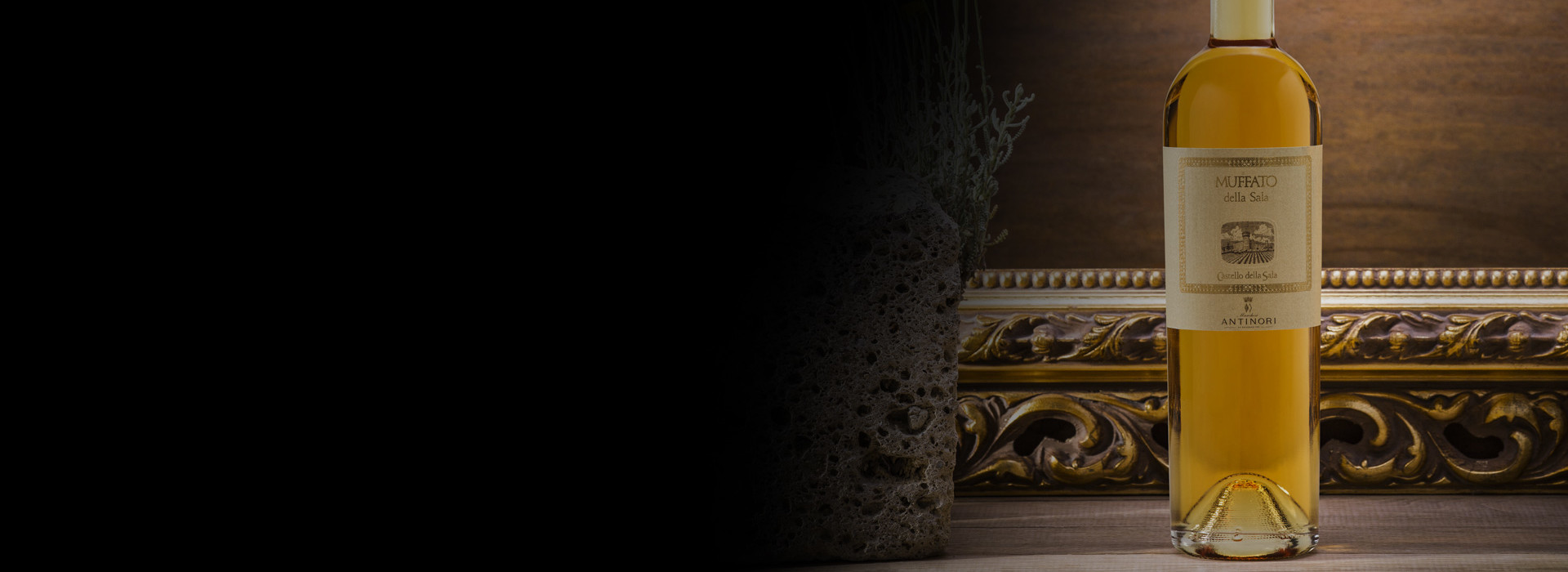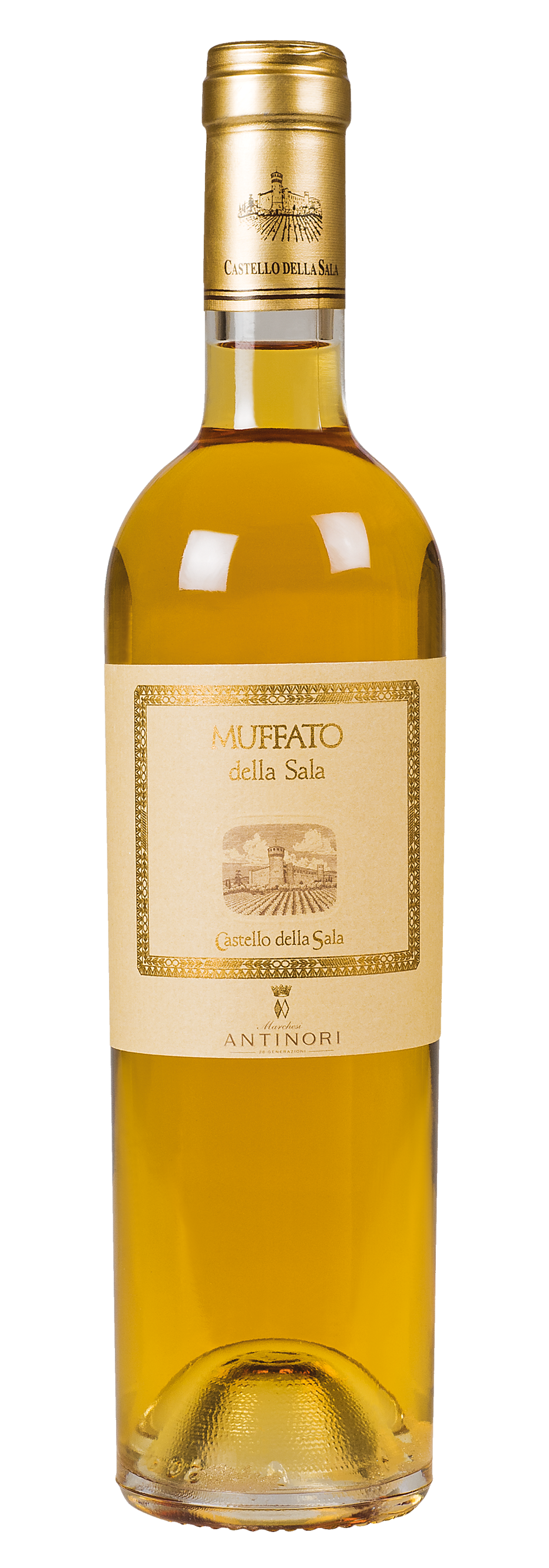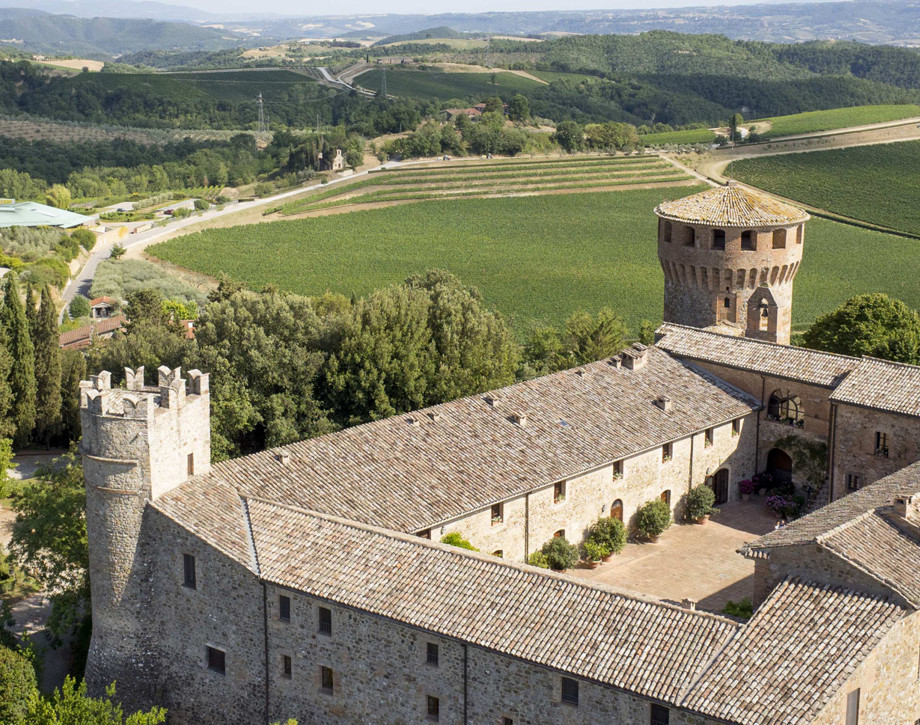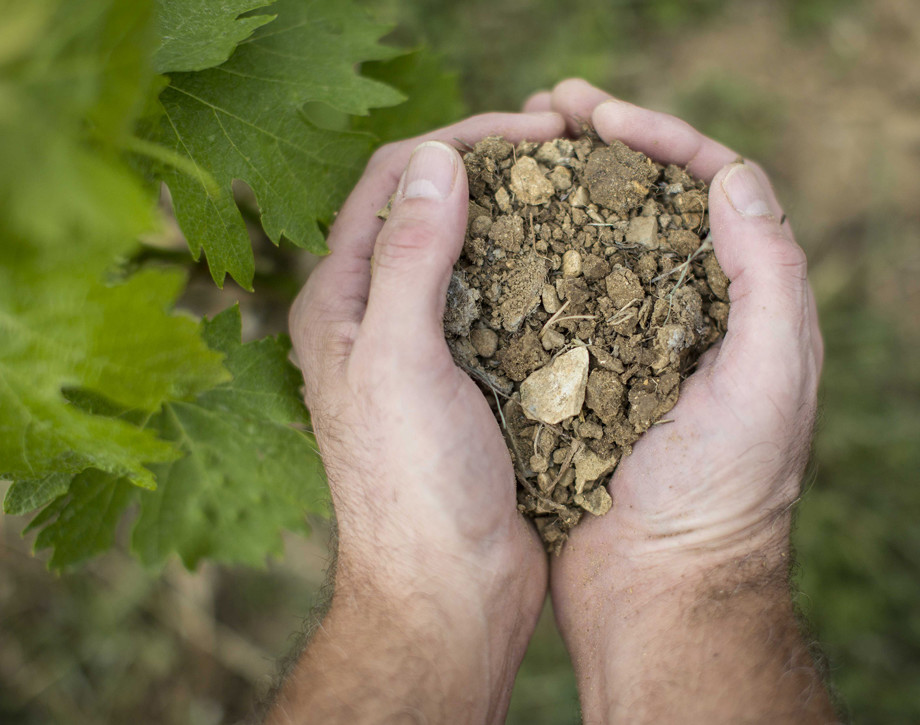Muffato della Sala

Climate
Overall climatic conditions for the 2018 growing season were cool with light rainfall prompting normal development of the vines’ vegetative cycle. January weather was mild with very little precipitation. Cold temperatures and several snow events marked the end of February and the beginning of March and were followed by higher-than-average levels of rainfall that helped replenish groundwater resources in the vineyards. July brought hot temperatures that persisted throughout the month of August and were accompanied by beneficial temperature swings between day and night, perfect conditions for a slow regular ripening phase. At the end of September, frequent morning fog encouraged the development of noble rot that completely covered grape clusters. The harvest began mid-October with Traminer, continued with Riesling, Sauvignon Blanc and Sémillon, and was completed at the beginning of November with Grechetto.
Vinification
Grapes were harvested from Castello della Sala’s vineyards, located at an altitude between 200 and 450 meters above sea level (656 and 1476 feet), in clay-based soils rich in marine fossils. All grapes were hand harvested and multiple trips were made to each vineyard parcel to pick nobly rotted berries at just the right time. Once the grapes were brought to the cellar, grape clusters were selected for quality on sorting tables. Grape clusters with their stems were gently crushed then pressed. The must underwent fermentation for 18 days at a temperature of approximately 17 °C (63 °F). This sweet wine was transferred into French oak barriques (Alliers & Tronçais) where it aged for about 6 months, then continued to age in stainless steel tanks for an additional period of 2 years.
Historical Data
Muffato della Sala is produced with grapes with “noble rot”, harvested in late October and early November to allow the morning mists to develop of Botrytis Cinerea, or noble rot on the grape berries. This type of mould concentrates the water of the crop, its sugars, and its aromas, endowing the Muffato della Sala with a harmonious and unmistakable fragrance. The first year to be produced was the 1987 and consisted of the blend of varieties such as Sauvignon Blanc (50%); Grechetto (30%) and Drupeggio (20%). The composition of the blend has varied over the years and now has attained its definitive results. Muffato della Sala is a fascinating wine, an expression, in small quantities, of the nature of a unique terroir.
Tasting Notes
Muffato della Sala 2018 is a bright golden yellow color. Its nose offers aromas of dried fruit, candied fruit and hints of saffron. The palate is sweet and well-balanced by decisive pleasant freshness. Its lingering aromatic profile indicates excellent aging potential.

The Wine
This fascinating wine is a blend of Sauvignon Blanc, Grechetto, Traminer, Sémillon and Riesling affected by Botrytis Cinerea (noble rot). The morning mists and local microclimate favour the development of this rot which reduces the water content of the grapes. The resulting concentration of sugars and aromas give the Muffato its special and unmistakeable flavour.

Climate
Overall climatic conditions for the 2018 growing season were cool with light rainfall prompting normal development of the vines’ vegetative cycle. January weather was mild with very little precipitation. Cold temperatures and several snow events marked the end of February and the beginning of March and were followed by higher-than-average levels of rainfall that helped replenish groundwater resources in the vineyards. July brought hot temperatures that persisted throughout the month of August and were accompanied by beneficial temperature swings between day and night, perfect conditions for a slow regular ripening phase. At the end of September, frequent morning fog encouraged the development of noble rot that completely covered grape clusters. The harvest began mid-October with Traminer, continued with Riesling, Sauvignon Blanc and Sémillon, and was completed at the beginning of November with Grechetto.
Vinification
Grapes were harvested from Castello della Sala’s vineyards, located at an altitude between 200 and 450 meters above sea level (656 and 1476 feet), in clay-based soils rich in marine fossils. All grapes were hand harvested and multiple trips were made to each vineyard parcel to pick nobly rotted berries at just the right time. Once the grapes were brought to the cellar, grape clusters were selected for quality on sorting tables. Grape clusters with their stems were gently crushed then pressed. The must underwent fermentation for 18 days at a temperature of approximately 17 °C (63 °F). This sweet wine was transferred into French oak barriques (Alliers & Tronçais) where it aged for about 6 months, then continued to age in stainless steel tanks for an additional period of 2 years.
Historical Data
Muffato della Sala is produced with grapes with “noble rot”, harvested in late October and early November to allow the morning mists to develop of Botrytis Cinerea, or noble rot on the grape berries. This type of mould concentrates the water of the crop, its sugars, and its aromas, endowing the Muffato della Sala with a harmonious and unmistakable fragrance. The first year to be produced was the 1987 and consisted of the blend of varieties such as Sauvignon Blanc (50%); Grechetto (30%) and Drupeggio (20%). The composition of the blend has varied over the years and now has attained its definitive results. Muffato della Sala is a fascinating wine, an expression, in small quantities, of the nature of a unique terroir.
Tasting Notes
Muffato della Sala 2018 is a bright golden yellow color. Its nose offers aromas of dried fruit, candied fruit and hints of saffron. The palate is sweet and well-balanced by decisive pleasant freshness. Its lingering aromatic profile indicates excellent aging potential.

Castello della Sala
Castello della Sala is located in the Umbria region, not far from the Tuscan border, about 18 kilometers from the historic city of Orvieto. The Medieval castle’s property extends over an area of 600 hectares (1482 acres), 200 hectares (495 acres) are planted with vineyards at an altitude that varies between 220 and 470 meters above sea level (722/1541 feet) on the gently rolling hillsides that characterize the beautiful countryside in this area. Castello della Sala is the perfect place for growing white varieties. The vines grow in clay and calcareous based soils, rich in fossil shells, and they are well exposed to the rising of the sun with an excellent difference of temperature between day and night. The one exception to the rule is Pinot Noir, the only red variety that has found in this area ideal growing conditions to best express its full potential.

Soil
Clay soils rich in deposits of marine fossils.
















